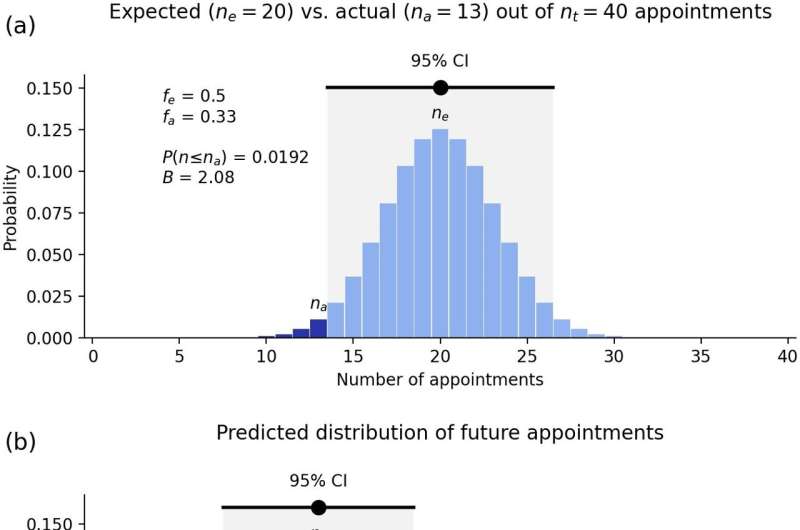March 15, 2024 report
This article has been reviewed according to Science X's editorial process and policies. Editors have highlighted the following attributes while ensuring the content's credibility:
fact-checked
peer-reviewed publication
trusted source
proofread
Gender and racial discrimination uncovered in leadership positions at Australia's leading universities

A professor and a complex systems researcher at the University of Sydney has found, through the use of a quantitative measurement statistical tool, that instances of gender and racial discrimination occur in leadership positions at Australia's most influential universities.
In their study, posted on the open access site PLOS ONE, Peter Robinson and Cliff Kerr used a statistical tool to make estimates of the likelihood of the percentage of university vice chancellor positions compared to the actual numbers.
Recently, an article was published in the newspaper The Australian claiming that of the 40 vice chancellor positions held at Australia's top universities, only 13 were female and only one was not of European ancestry. That led the researchers to look into the claim to determine whether it was accurate and then to determine if the ratio could be due to merit or chance, or whether, as was claimed in the article, it was due to discrimination.
To start their effort, the researchers noted a lack of an objective analysis by the reporter, suggesting the findings were up to conjecture. Thus, it was not clear if the results were examples of bias.
They then noted that discrimination and bias in the university appointment process are the type of activities that can be quantified statistically using binomial distribution procedures. Such procedures have been automated and made available to the casual user—the web app BinomialBias, for example. In their work, they used BinomialBias to calculate the chance of the number of vice chancellors matching the actual numbers.
They found, as one example, that if half of the qualified pool of applicants for a vice chancellor position were women and that if gender was not allowed to be a deciding factor, then at last 20 women should be appointed on average. They then found that the chance of there being only 13 positions filled by women would be just 2% if there were no bias or discrimination involved. They also found that the chance of there just being one non-European vice chancellor, if the process was nondiscriminatory, to be 1 in 27 billion.
More information: P. A. Robinson et al, Quantitative measures of discrimination with application to appointment processes, PLOS ONE (2024). DOI: 10.1371/journal.pone.0299870
Journal information: PLoS ONE
© 2024 Science X Network




















